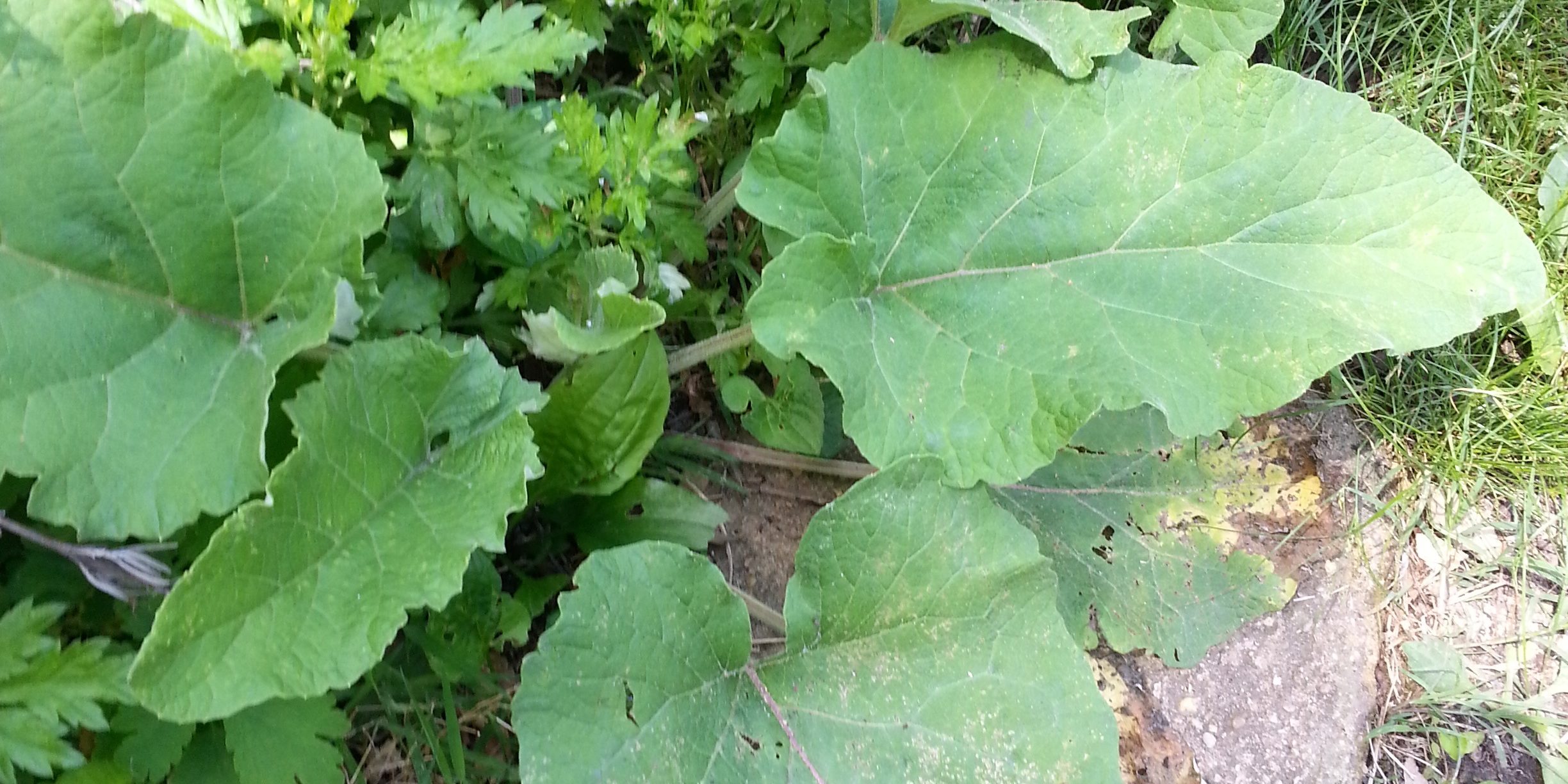We’ve all seen Burdock’s large, green, slightly fuzzy leaves, in the woods or in the park. If you have pets you may have spent long hours, as I have, picking pesky burrs out of fur (or clothes, or hair *sigh*). It is a hardy, stubborn plant that will grow just about anywhere. And I have learned, in my years as an herbalist, that those tough weeds, the ones we just can’t get rid of, often have the best medicine. Burdock is no exception.
Burdock, Arctium lappa, is a biennial plant native to Eurasia, that has naturalized all over the world, including the United States. It is widely used as food, medicine, and for various practical purposes.
The large soft leaves have skin-soothing properties and have been used as bandages and toilet paper. They can be brewed fresh or dried as tea and drunk for their diuretic effect or used as a face wash. They can also be eaten, in a pinch, as a wild vegetable. Slightly crushed and rubbed on the skin they can soothe bug bites, nettle stings, and minor skin irritations. They have also been used to reduce swelling of the joints. I find them cooling and sometimes plaster them on the back of my neck when I’m working outside.
The first-year roots are the most commonly used part of the plant. These roots are alterative and detoxifying. I like them especially in the spring to get the liver moving and shrug off the winter blues. They are bitter and slightly sweet, cooling in their action, and are a particularly good cleansing herb for those who tend to run hot, like me, a classic high-Pitta gal. Burdock roots, like their cousin Yellow Dock, are excellent for skin troubles and are commonly used to treat eruptions, rashes, and some types of eczema. The roots can be chopped and boiled to make tea, or eaten as a vegetable. I’m fond of Burdock and potato soup, myself, and there’s never shortage of Burdock to be harvested in the spring and early summer. Of course you can also take Burdock in tincture or capsules, especially if you’re treating a particular condition and want to take larger doses.
The Burdock seed, technically a fruit, is also used medicinally. When the burrs are ripe, and brown, they are ready to harvest. This is also when they are at their stickiest, so be careful, they can get everywhere! They are used as a tea or tincture, or an infused oil, for skin complaints as well as cold and flu. I haven’t actually used them this way myself, I think I have too many childhood memories of the burrs to want to harvest them now, but other herbalists tell me that Burdock seed oil is excellent medicine.
I would encourage you to meet Burdock in the woods or in a garden, and see its gorgeous green leaves and cheerful purple flowers for yourself. But if you want to start cleansing right now, the dried root and capsules are available on our website.









Thanks for the ability to share by Facebook !!
I would like to know how to use medicinal burdock medicinal